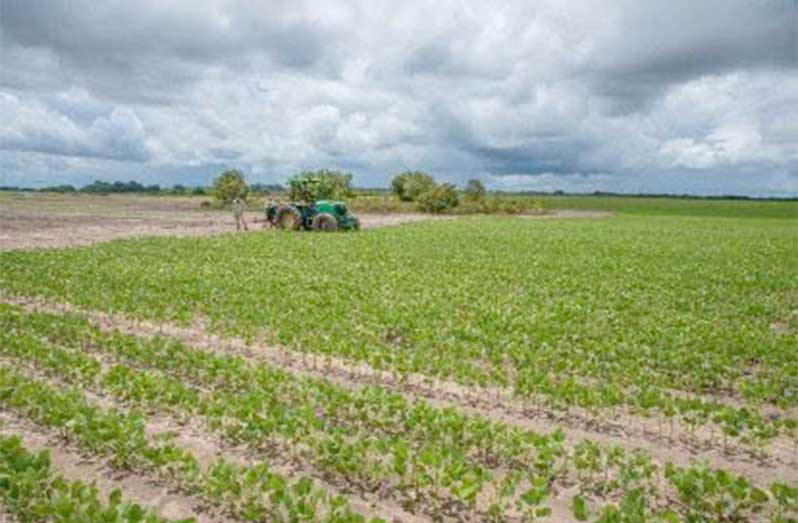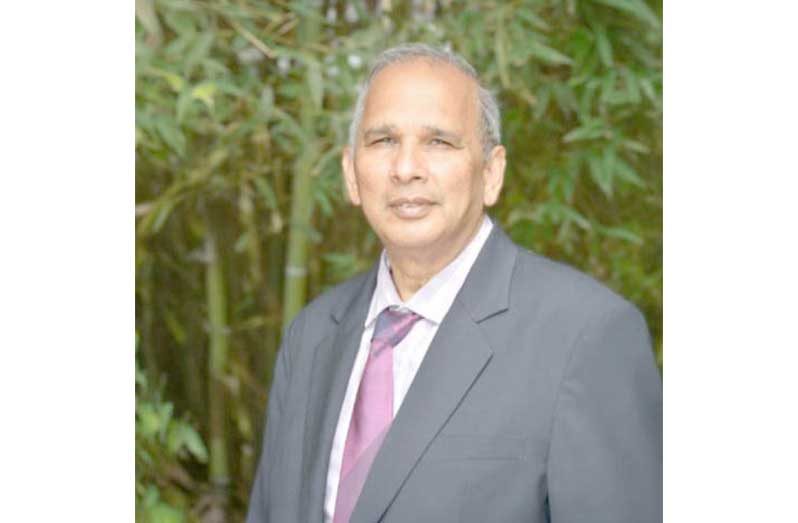– Incoming IICA director, says country’s expanding and sustainable agriculture sector a model, training ground for others
By Naomi Parris in Costa Rica
EXPLODING with new production targets and technologies in agriculture, Guyana can become the Caribbean’s food laboratory, providing access to key tools and training to advance the region’s food system.
Speaking with the Guyana Chronicle during an interview, Muhammad Ibrahim, the incoming director general of the Inter-American Institute for Co-operation on Agriculture (IICA), said that,with the advancements being made in introducing new crops like corn and soya bean and promoting more sustainable agriculture practices, Guyana has the potential of being the Caribbean community’s ‘country lab’, mirroring massive production hubs like Brazil.
“Guyana, in the nexus of CARICOM but also in the south, can be the country that can be the equivalent of Brazil — a country that is a laboratory where you advance in a modern agricultural system,” the agricultural engineer explained.

Building on this vision, Ibrahim noted that modernising the sector requires recognising the diversity within Guyana’s own food-production landscape.
“We need to understand that we have the coastal area, where we have a lot of farmers, vegetable farmers, small dairy farmers, so you need to understand how you produce differentiated policies,” he said, while explaining that a one-size-fits-all approach cannot meet the needs of the country’s varied agricultural zones.
Guyana has been steadily rolling out a suite of policies designed to support its rapidly expanding agriculture sector, with a strong emphasis on technology, diversification and sustainable production. In recent years, the government has invested heavily in climate-smart farming techniques, infrastructure, irrigation upgrades and digital tools that improve monitoring, yields and market access for farmers.
Notably, Ibrahim highlighted the country’s efforts in shifting to more sustainable practices within its traditional production sectors like sugar and rice.
“The sugar cane industry is more under control under the government. You have the rice sector, which is large and intensive, so we see the rice sector also advancing. It is already producing sustainable practices….,” he said.
Both industries have reported, within recent years, massive production outputs, which are complemented by other crop diversification efforts, putting Guyana in a position to become a hub.
“Providing more modern agriculture, that is where we see Guyana creating a hub, a laboratory for modern agriculture, but it’s not only Guyana, but the whole of CARICOM is also important,” he said.
A SOLUTIONS-BASED AGRICULTURE
Ibrahim further acknowledged the work of the wider Caribbean, highlighting the efforts to enhance trade and accelerate the region’s push to cut its food import bill by 2030, which is a strategy he said has the full backing of IICA.
“To move forward in the short term, IICA has been supporting this strategy with technology, more precision agriculture and production of biofortified foods, like biofortified rice in Guyana. Countries like Suriname, Guyana and Jamaica are moving forward and IICA has been with CARICOM,” the incoming director general pointed out.
He stressed that in order for the region to meet its full potential in achieving long-term sustainability, practical solutions are needed.
This, Ibrahim noted, is something he commits to bringing to the table when he officially assumes his new role as director general in January.
“My vision for agriculture is an agriculture that is competitive and provides solutions [addressing] challenges, one, not only climate change, but also challenges in the supply chain and these are topics IICA has been looking at,” he said.
Meanwhile, in an invited comment to this newspaper, Guyana’s Agriculture Minister, Zulfikar Mustapha, disclosed that the government has mapped out plans to further advance its agri-food systems, integrating the use of technology to assist farmers and strengthening youth engagement and training.
Through a partnership with IICA, Guyana, he said, intends to implement diverse technology-driven policies to build sustainability not only for the country itself, but for the wider region.
Guyana’s President, Dr. Irfaan Ali is the Lead Head of Government in the CARICOM Quasi-Cabinet with responsibility for agriculture, agricultural diversification and food security, while Mustapha chairs the region’s Special Ministerial Task Force on Food Production and Food Security.
“This is a part of President Ali’s broader vision, modernising the agriculture sector in terms of bringing new technologies and we will extend that to the wider Caribbean,” Mustapha said.
Out of 186 countries, only Guyana produces enough food to self-sufficiently feed all its citizens without foreign imports, according to recent research.
The study, published in Nature Food, investigated how well each country could feed its population in seven food groups: fruits, vegetables, dairy, fish, meat, plant-based protein and starchy staples.
Worldwide, the study found that 65 per cent of countries were overproducing meat and dairy, compared to their own populations’ dietary needs.
It also found that Guyana was the only country that could boast total self-sufficiency, while China and Vietnam were close behind, being able to produce enough food in six out of seven food groups.



.jpg)









